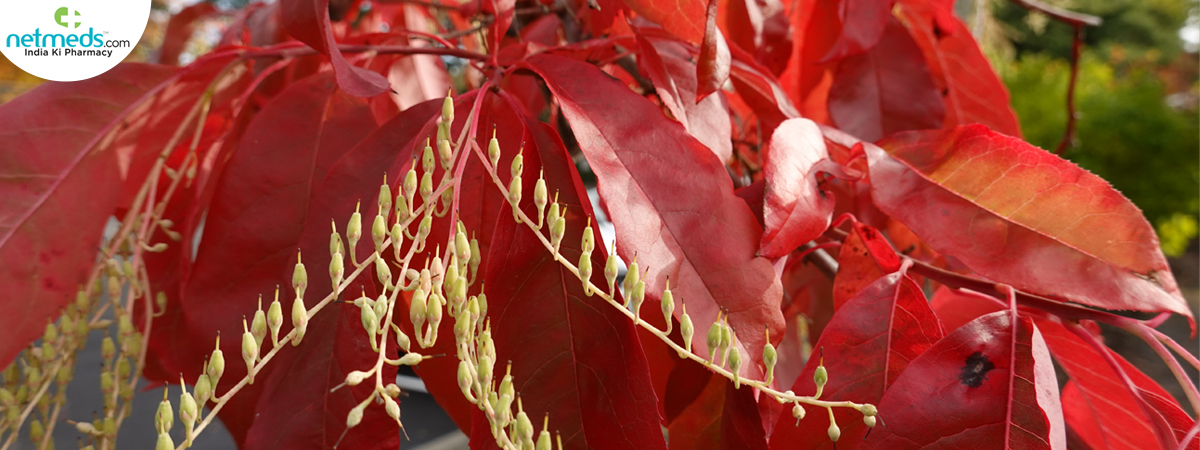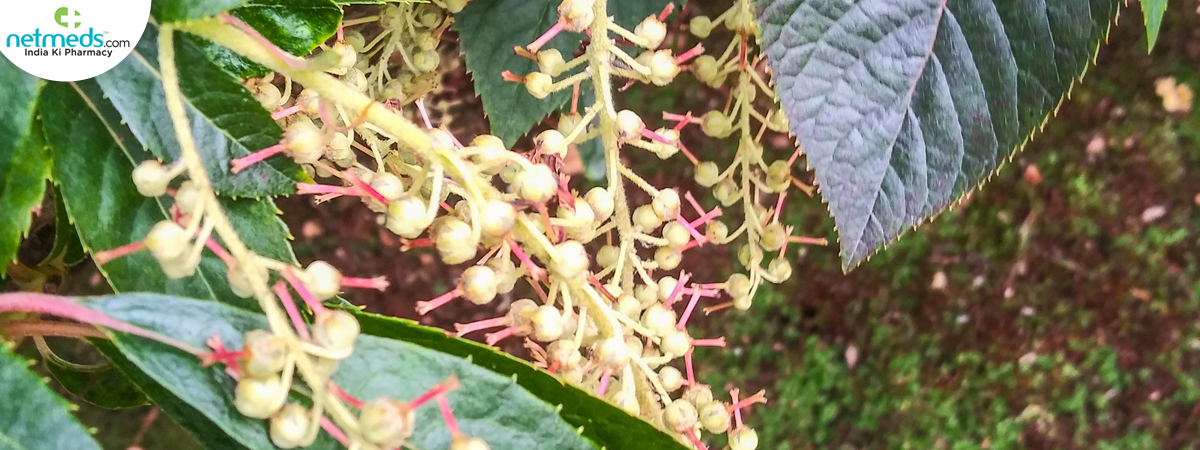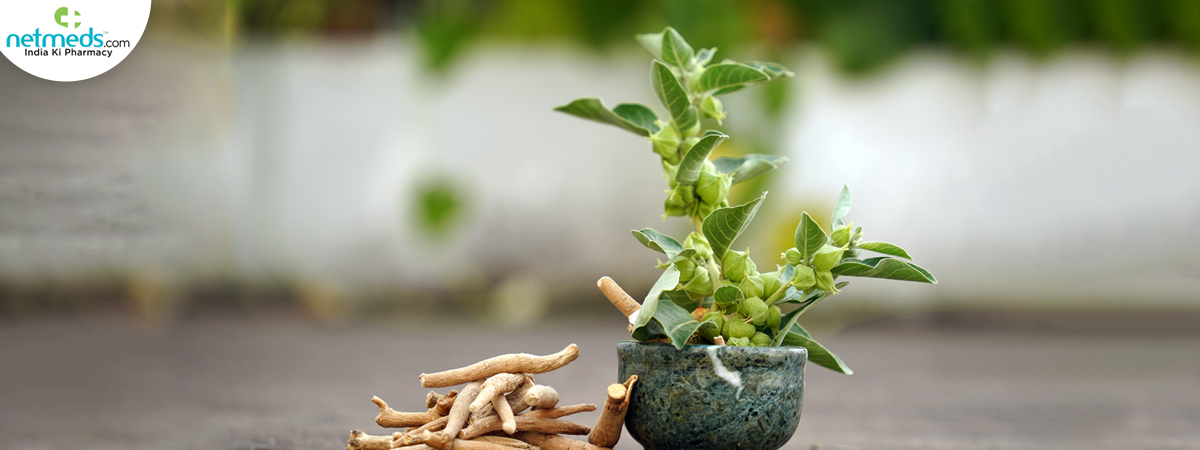The Sourwood Tree, with its beautiful bell-shaped flowers and fiery red fall foliage, is often admired as a stunning ornamental tree native to the eastern United States. However, beyond its aesthetic appeal, this underappreciated botanical treasure also boasts a wealth of traditional medicinal uses. Known scientifically as Oxydendrum arboreum, the Sourwood tree has long played a role in herbal medicine and folk healing practices, particularly among Native American communities and Appalachian herbalists.
In this comprehensive guide, let us explore the tree’s botanical description, medicinal qualities, Ayurvedic properties, and therapeutic benefits. We will also look at its ideal dosage, possible side effects, and precautions to consider before incorporating it into your natural wellness routine.
(Stay in bloom with our wide selection of Ayurvedic and botanical-based wellness solutions!)

What is Sourwood?
The Sourwood Tree, or Oxydendrum arboreum, is a deciduous tree native to the southeastern United States. It belongs to the Ericaceae (heath) family, which also includes plants like blueberries, cranberries, and rhododendrons. Sourwood gets its name from the sour or tangy taste of its leaves, which have been traditionally chewed or brewed into tea for medicinal purposes.
Often referred to as Lily-of-the-Valley Tree, Soratree, or Sorrell Tree, this unique plant blooms in mid-summer, producing sprays of creamy white flowers that attract pollinators and are the source of the highly prized and rare Sourwood honey.
How to Identify Sourwood? Key Botanical Features
Sourwood is a small to medium-sized tree commonly found in acidic, well-drained soils in wooded areas or along roadsides. It typically grows between 25 to 60 feet tall and is easily recognizable by its lance-shaped leaves, which measure about 4–8 inches in length. The foliage appears dark green during summer and transforms into vivid shades of red, orange, or purple in the fall, adding striking seasonal beauty. During the flowering season, Sourwood produces small, bell-shaped white flowers that bloom in drooping clusters, resembling those of the lily-of-the-valley. Its bark is gray-brown, rough, and deeply furrowed, giving the tree a rugged texture. The leaves carry a distinct sour or acidic taste, which is the origin of its name. Thriving best in acidic, sandy, or loamy soil, the tree grows well under full sun to partial shade conditions.
Synonyms of Sourwood
Sourwood is known by various names across different regions and contexts:
Botanical Name: Oxydendrum arboreum
English: Sourwood, Lily-of-the-Valley Tree, Sorrel Tree, Soratree
Local Names: Appalachian Tea Tree, Elk Tree, Titi Tree
Sanskrit (tentative based on Ayurvedic properties): Amlapatra
Common Regions: Southern Appalachian Mountains, Southeastern U.S.
Phytochemical Profile of Sourwood
The healing properties of Sourwood come from its rich phytochemical content:
Tannins: Astringent compounds that aid in wound healing and reduce inflammation.
Flavonoids: Offer antioxidant protection, support heart health, and reduce oxidative stress.
Phenolic Acids: Promote cellular health and possess anti-inflammatory properties.
Methyl salicylate derivatives: Provide pain relief and act similarly to aspirin.
Terpenes: Known for their anti-inflammatory and antimicrobial actions.
These constituents make Sourwood a plant of considerable interest in herbal pharmacology and traditional medicine.
Medicinal Qualities of Sourwood
The Sourwood Tree has been historically used in North American folk medicine, particularly for the following properties:
Astringent: Helps tighten tissues and reduce secretions.
Diuretic: Promotes urine flow, aiding in detoxification.
Analgesic: Offers mild pain relief for joint pain and inflammation.
Antipyretic: Reduces fever and related symptoms.
Expectorant: Loosens mucus and aids in respiratory ailments.
Sedative: Has mild calming and anti-anxiety properties.
Tonic: Promotes overall vitality and energy balance.
Ayurvedic Properties of Sourwood
While not directly mentioned in classical Ayurvedic texts, the properties of Sourwood align with Ayurvedic principles. Here is a breakdown based on its traditional uses:
Rasa (Taste): Amla (sour), Kashaya (astringent)
Virya (Potency): Shita (cooling)
Vipaka (Post-digestive effect): Katu (pungent)
Dosha Effect: Balances Pitta and Kapha, may mildly aggravate Vata if consumed in excess.
Karma (Actions): Tridosha Shamana, Shothahara (anti-inflammatory), Jwarahara (fever-reducing), Mutrala (diuretic).

10 Amazing Health Benefits of Sourwood
Promotes Urinary Health
Sourwood’s mild diuretic properties help flush out toxins and excess fluids from the body. It has traditionally been used for treating urinary tract infections (UTIs) and kidney inflammation. The increased urine flow aids detoxification and supports kidney function.
Reduces Inflammation and Pain
The bark and leaves of the tree contain tannins and methyl salicylate derivatives, which mimic the anti-inflammatory and analgesic effects of aspirin. This makes it beneficial for joint pain, muscle aches, arthritis, and general inflammation.
Soothes Respiratory Ailments
Sourwood tea has expectorant qualities that help loosen mucus in the respiratory tract. It is commonly used to manage bronchitis, congestion, colds, and mild asthma symptoms, easing breathing and clearing the chest.
Also Read: Respiratory Health: 5 Incredible Herbs To Boost Your Lung Power
Supports Digestive Health
When consumed as tea, Sourwood leaves stimulate the appetite and assist digestion. The sour taste encourages digestive juices, relieves gas, and may help with indigestion and sluggish bowels.
Lowers Fever Naturally
Native American tribes and Appalachian herbalists have used Sourwood to treat fevers due to its cooling, antipyretic properties. The leaves or bark decoction helps lower body temperature and provide comfort during viral infections.
Improves Oral Health
The astringent property of Sourwood makes it beneficial for oral health. Gargling with cooled Sourwood tea helps relieve sore throat, swollen gums, mouth ulcers, and mild toothache due to its antibacterial action.
Also Read: The Importance Of Good Oral Hygiene
Aids in Skin Healing
Topical application of crushed leaves or cooled tea infusion helps treat minor cuts, rashes, insect bites, and boils. Its antibacterial and anti-inflammatory effects accelerate healing and reduce skin irritation.
Helps Manage Blood Sugar
Preliminary studies and traditional use suggest that Sourwood may help in maintaining blood sugar levels, making it a potential herbal aid for individuals with mild type 2 diabetes or insulin resistance.
Also Checkout: Diabetes: 5 Incredible Herbs For Controlling Blood Sugar Levels- Infographic
Combats Oxidative Stress
Rich in antioxidants like flavonoids and phenolic acids, Sourwood helps fight free radicals and protects cells from oxidative damage, promoting overall wellness and slowing down ageing processes.
Relieves Anxiety and Stress
Sourwood’s mild sedative properties calm the nervous system. A warm cup of Sourwood tea can help alleviate anxiety, promote relaxation, and encourage restful sleep, especially during times of emotional unrest.
Sourwood Dosage
Sourwood is best used in moderation and under guidance, especially for medicinal purposes. Here are some general dosage guidelines:
Tea (Infusion): Steep 1 teaspoon of dried leaves in a cup of hot water for 10 minutes. Drink 1–2 times daily.
Tincture: 1–2 ml up to three times a day (as recommended by an herbalist).
Powdered Bark/Leaves: 500 mg to 1 g daily, preferably mixed with honey or warm water.
Topical Use: Apply the cooled tea or crushed leaves as a poultice for skin ailments.
Note: Always consult a licensed practitioner or herbalist before beginning any herbal remedy, especially if you are pregnant, nursing, or on medications.

Side Effects of Sourwood
Although Sourwood is generally well-tolerated, overconsumption or misuse may lead to certain side effects:
Gastrointestinal Issues: Large quantities may cause nausea, stomach cramps, or diarrhea.
Allergic Reactions: Rare, but some individuals may experience rashes, itching, or swelling.
Low Blood Pressure: Due to its diuretic effects, excessive use may lower blood pressure in sensitive individuals.
Sourwood Precautions
Pregnancy and Breastfeeding: Not enough data is available, so pregnant or nursing women should avoid Sourwood unless supervised by a medical professional.
Pre-existing Medical Conditions: Individuals with kidney issues, low blood pressure, or heart conditions should exercise caution.
Drug Interactions: May interact with diuretics, antihypertensives, or blood sugar-lowering medications.
Children: Use in children should be strictly supervised and under medical guidance.
Conclusion
The Sourwood Tree is not just a visual gem of the American forests but also a hidden herbal powerhouse. From managing inflammation and boosting respiratory health to improving digestion and relieving stress, its leaves and bark offer a wide array of healing benefits. While modern science is still exploring its full pharmacological potential, traditional use backs its effectiveness for various ailments.
However, like any medicinal plant, Sourwood should be used mindfully and in moderation. If you are looking to include a natural remedy in your wellness regimen that is time-tested and backed by folk wisdom, Sourwood deserves a spot on your herbal radar.
Ready to harness the power of nature? Explore our herbal tea range and Ayurvedic tinctures today for a natural boost to your vitality!
(This article is reviewed by Kalyani Krishna Chief Content Editor)
Author Profile
Soumita Basu:
Soumita Basu holds a Bachelor’s Degree in Pharmacy and is keenly interested in Ayurveda, home remedies, yoga, fitness, diagnostics, and beauty. With nearly 6 years of experience, she produces evidence-based health content, including articles, videos, and infographics, to provide valuable insights to her audience.
References:
- https://www.researchgate.net/publication/255722915_Evaluation_of_physicochemical_and_antioxidant_properties_of_sourwood_and_other_Malaysian_honeys_A_comparison_with_manuka_honey
- https://warnell.uga.edu/sites/default/files/inline-files/xSourwood%20Oxydendrum%20arboreum%20pub%202016%20-%20Sourwood%20Oxydendrum%20arboreum%20A%20Honey%20Tree%20ARBOR-24.pdf





















